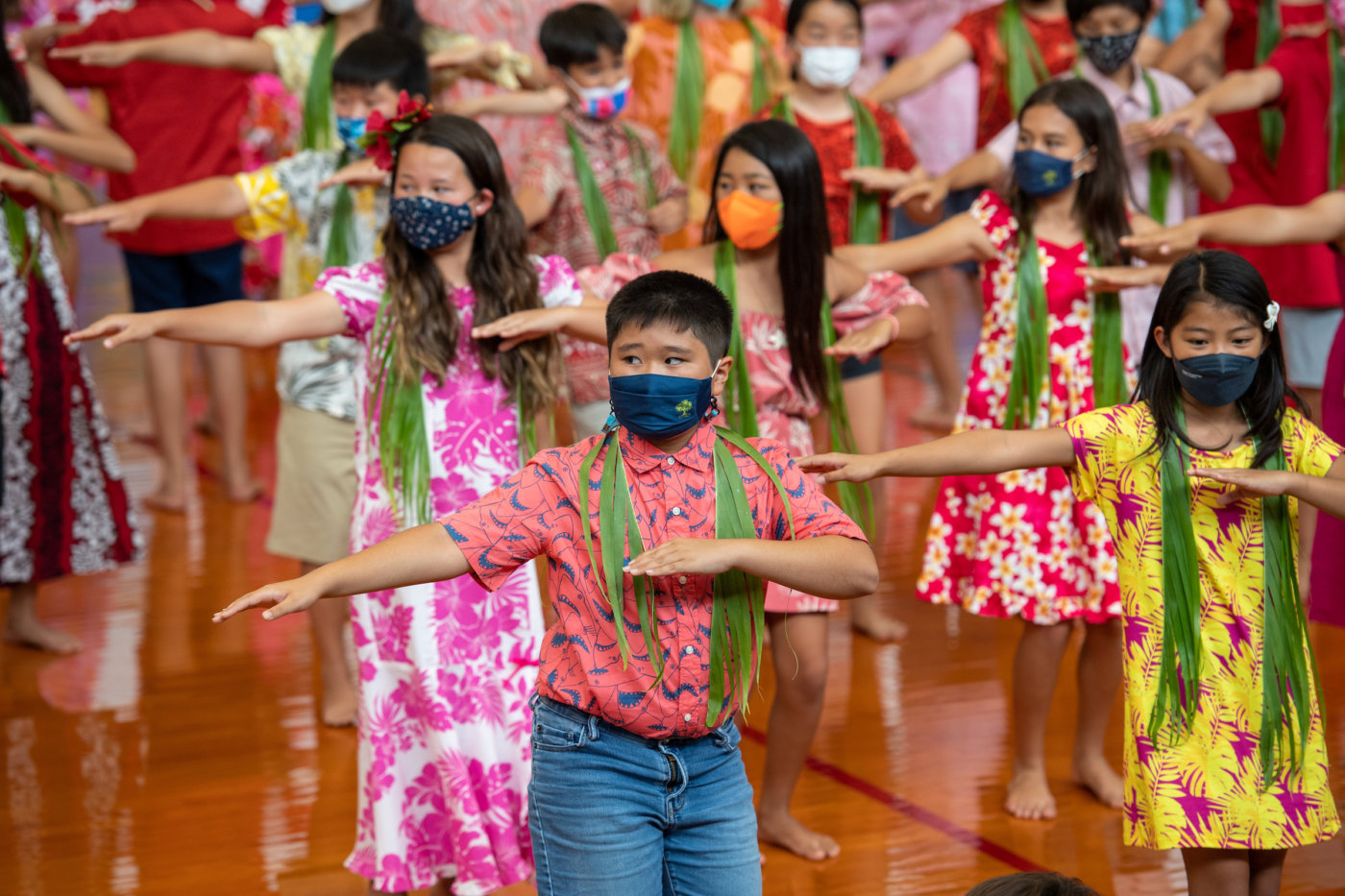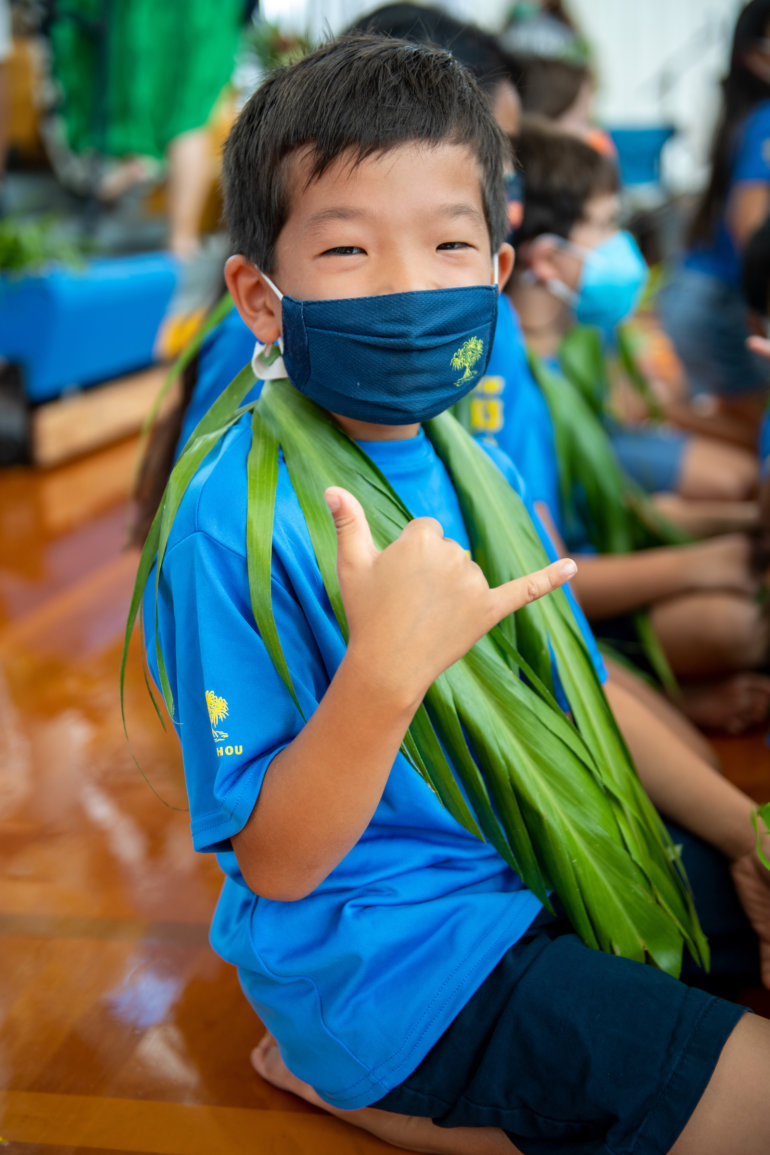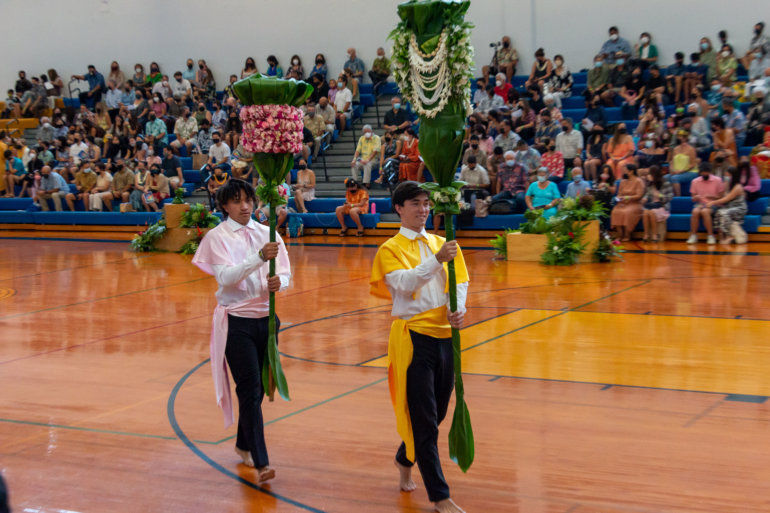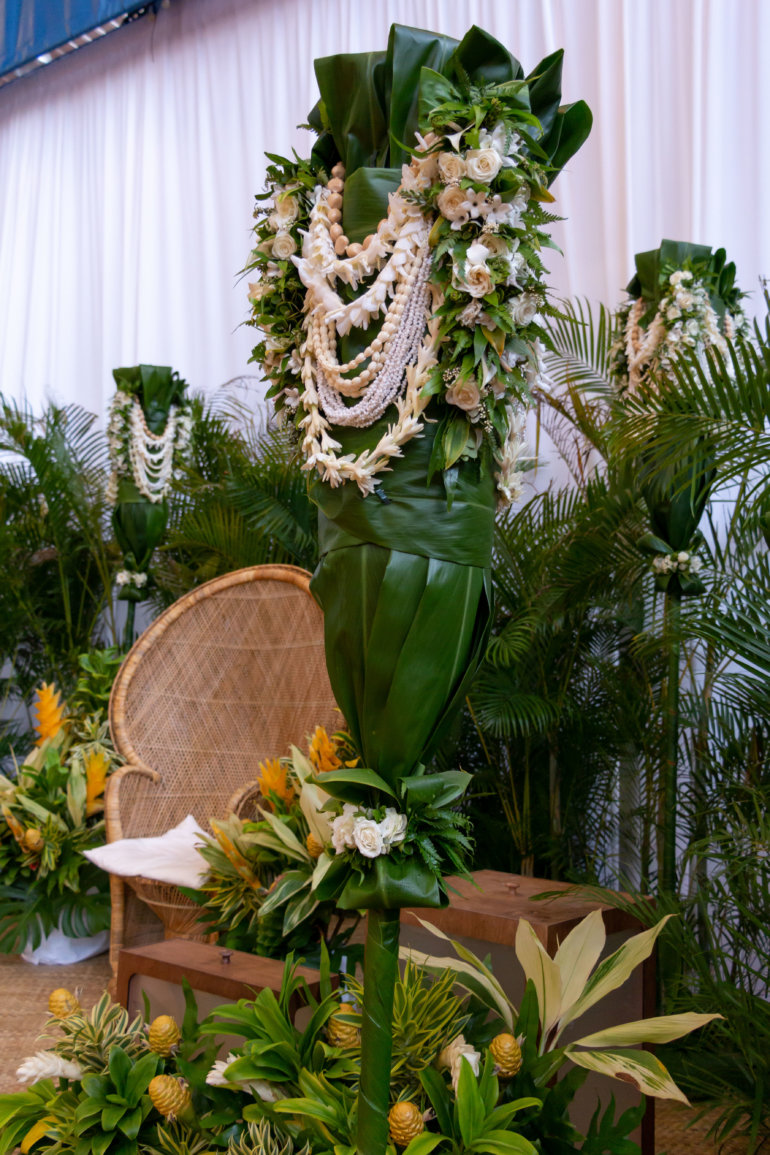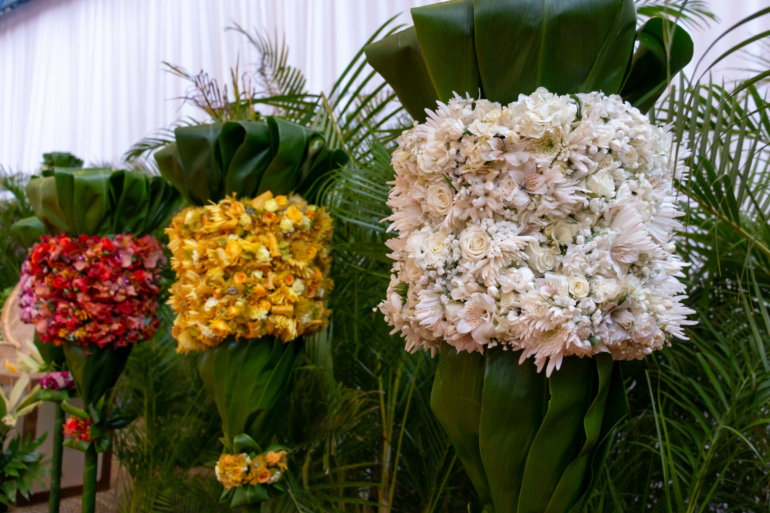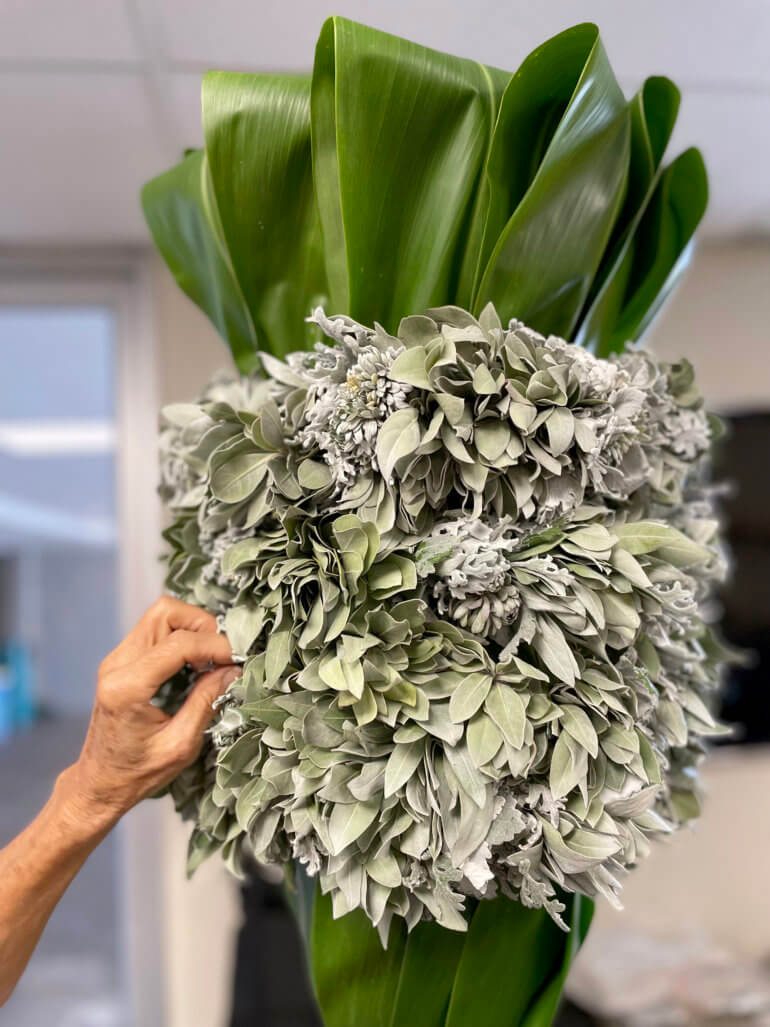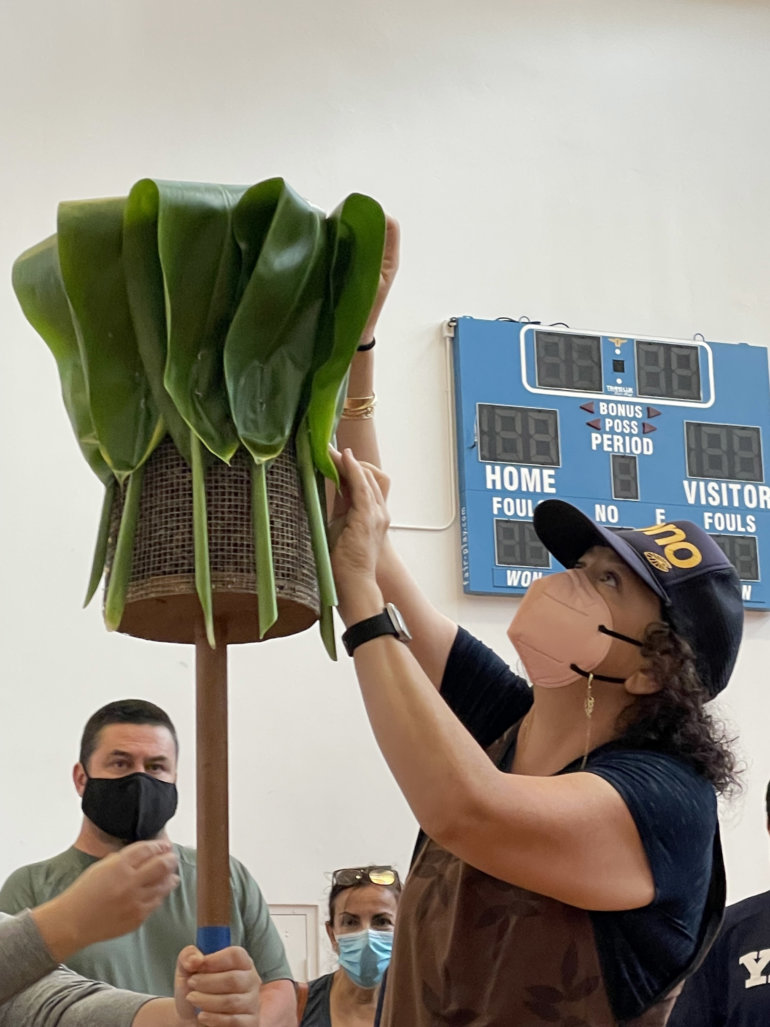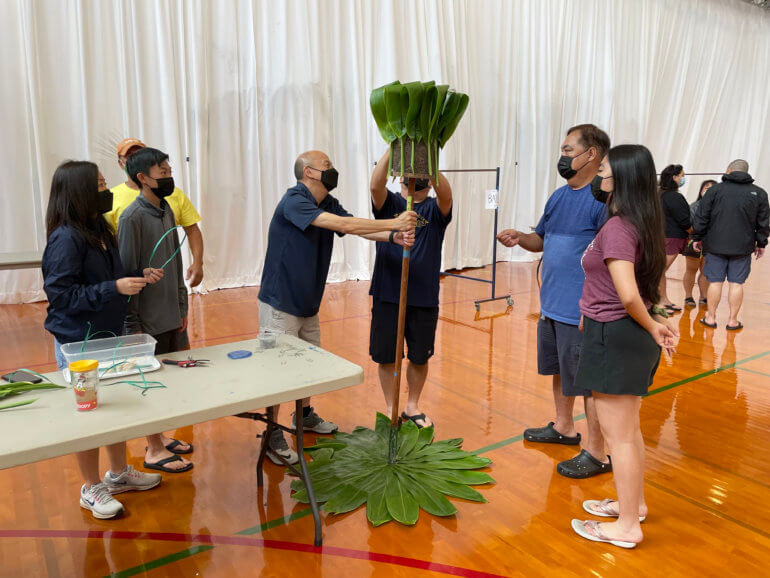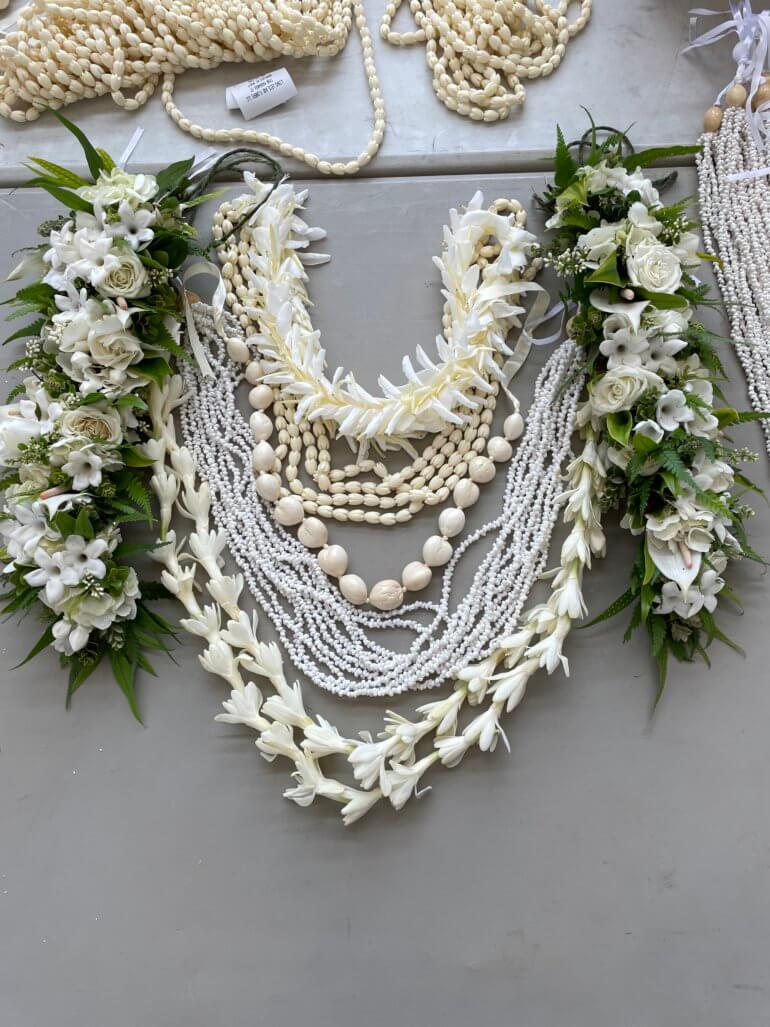Related: Watch: K – 5 May Day 2022
Watch: Case Middle School May Day 2022
Watch: Holokū Pageant 2022
The May Day Program and Holokū Pageant wouldn’t be complete without the special lei and decorations, such as the Holokū kāhili, handmade from fresh plants and flowers. These traditions that pay homage to Hawaiian culture and Punahou are possible thanks to the talents and efforts of some devoted lei makers at Punahou.
The kāhili staffs, historically clad in feathers, are a symbol of the aliʻi chiefs and families of the Hawaiian Islands. Carried by a kāhili bearer behind each princess during the procession of the Holokū Court, the kāhili represent the different Hawaiian islands, with colors that symbolize the unique flower of each Island. This year, the kāhili were revamped with extra flowers to add a bold colorful look.
The kāhili are works of art to admire, created by a team of around 10 longtime dedicated Holokū volunteers as a labor of love. The flowers and plants are grown, harvested or sourced from lei makers. The flowers are then woven in the style of lei wili, which are wound around the ti leaf-covered kāhili, right before the Holokū performance.
“There is a lot of time, energy and people involved,” said Kasumi Hara ’95, a longtime Punahou volunteer. “The lei makers plant and grow flowers throughout the year, and it’s hard to keep this traditional style of lei making going because you need the skill and knowledge of how to do every part of the process.”
While there is the option of moving to silk flowers, keeping this tradition alive at Holokū is paramount. “We’re all flower people, and we love this kind of stuff,” Hara said. “We get together and talk shop about plants. It’s a lot of work, but at the end of the day, when you’re sitting there watching the show, it’s fun to see your creation fully complete and all the Islands represented.”
For the K – 5 May Day Program, Kimo Keaulana coordinated the creation of 750 tī leaf (lāʻī) lei for students in grades 2 – 5. “I thought it was a good idea for our keiki to wear these lei, and I wanted to give them something that I had made,” said the ‘Ike Hawai‘i faculty and Kumu Hula.
Students and faculty, including John Chock ’01, harvested 16 buckets of tī leaves from their yards and those of family and friends. Over several days, Keaulana arrived early to school to debone the leaves and tie them into lei, joined by Emma McGuire ’93, Hawaiian language faculty, and Ke’alohi Reppun ’99, director of Kuaihelani Learning Center.
It was an incredible effort that translated into a meaningful lesson for students – that we can honor people who have love for us, even if we don’t know them, which is the spirit of aloha.
“The tī leaves were brought by people we do not know, but they knew that we needed them. That is their aloha for us. My aloha for the students was for them to wear something I had made them. Wearing aloha as a lei is a part of who we are at Punahou,” Keaulana said.


